This content originally appeared on Level Up Coding - Medium and was authored by Anto Semeraro

Software Architecture Patterns
Tracing the path from centralized to distributed systems and exploring the journey of Monolithic Architecture towards Microservices
From the early days of software development, monolithic architectures have been a popular choice for building applications. However, as technology has evolved, so too have the challenges and limitations of these architectures become more apparent.
In this article, we’ll explore the evolution of monolithic architectures and the journey to microservices, including the benefits and challenges of this transition. So buckle up and join us on the long and winding road to microservices.
The Origins of Monolithic Architectures in Software Development

When we think of modern software development, it’s hard not to imagine microservices architecture.
Microservices weren’t always the go-to approach for software development. In fact, the original way of developing software was through monolithic architecture.
The Rise of Monolithic Architecture: A Historical Overview
The history of monolithic architectures can be traced back to the early days of software development, with the emergence of large mainframe computers in the 1950s and 1960s.
These early computer systems were characterized by a centralized architecture, with a single mainframe computer serving as the hub for all computing operations.
In the 1970s and 1980s, with the advent of personal computers and the rise of client-server architectures, the focus shifted towards more distributed systems. Monolithic architectures persisted, with many large software applications, such as enterprise resource planning (ERP) systems, continuing to rely on a centralized architecture.
Early Software Development
In the early days of software development, systems were created with a centralized approach. All the code, data, and logic were contained within one application or system.
These systems were created to be run on a single computer and had no need for multiple components. And this made sense at the time, as computers were not as powerful as they are today, and the development process was not as sophisticated as it is now.
The Birth of Monolithic Architecture
As software development continued to evolve, the monolithic architecture became the dominant approach.
Monolithic architecture is characterized by having a single codebase that contains all the functionality of an application, and also a centralized data storage system that is accessible to all components of the application. This approach made it easier to develop and maintain applications, as everything was contained in one place.
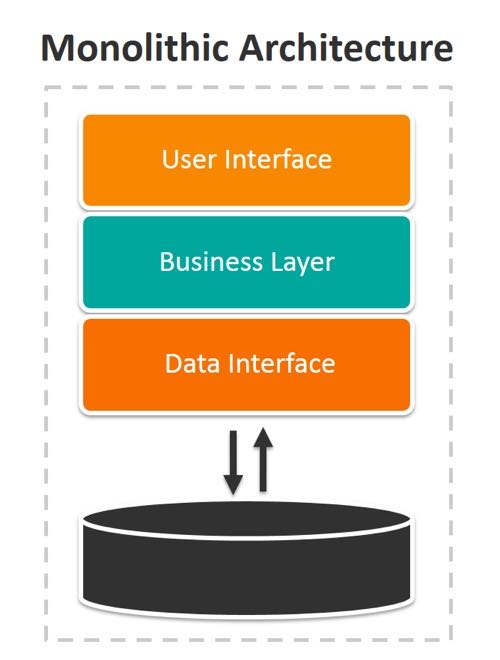
Despite its advantages, monolithic architecture has some drawbacks. Its centralized approach can lead to scalability issues and bottlenecks in application performance. Additionally, any changes made to the codebase can affect the entire application, which can lead to downtime and other issues.
Understanding the origins of monolithic architecture is crucial to understanding the evolution of software development.
Key Features and Characteristics of Monolithic Architectures
Monolithic architectures have been a popular approach to software development for many years.

They have certain limitations in terms of scalability and flexibility that have led to the emergence of new architectures like microservices.
Centralized Data Storage
One of the defining features of monolithic architectures is their centralized data storage. All of the application’s code and data reside in a single codebase, making it easy to develop and deploy.
This centralized approach can also create bottlenecks in application performance and make it difficult to scale the application as the data grows.
Single Codebase
Another characteristic of monolithic architectures is their single codebase. This means that all of the application’s components are developed and deployed together.
While this approach can simplify development and deployment, it can also make it more challenging to manage changes and updates, as any modifications to one component can affect the entire application.
Limitations in Scalability and Flexibility
Despite their advantages, monolithic architectures have limitations in terms of scalability and flexibility. As the size and complexity of the application grows, it can become increasingly difficult to maintain and update the codebase.
Additionally, monolithic architectures may not be the best approach for applications that require frequent updates or need to scale quickly in response to changing user needs.
Influence on Other Software Architecture Patterns
Monolithic architectures have been the basis for other software architecture patterns, such as client-server architecture.
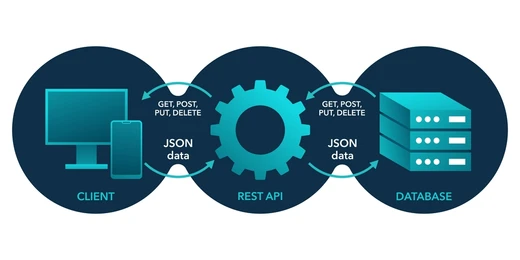
Client-server architecture divides the application into two separate parts — the client and the server — which communicate with each other to perform specific functions. While client-server architecture is more flexible and scalable than monolithic architecture, it is still a centralized architecture and has its own set of limitations.
Monolithic architectures have been a popular approach to software development for many years, but they have limitations in terms of scalability and flexibility.
As the demand for more agile and scalable applications has grown, new architectures like microservices have emerged as a viable alternative.
Challenges of Maintaining and Scaling Monolithic Architectures
While monolithic architectures have been a popular approach to software development, they come with certain challenges when it comes to maintaining and scaling the application.

Risk of Downtime
One of the primary challenges of maintaining a monolithic architecture is the risk of downtime.
Since all of the application’s components are developed and deployed together, any modifications or updates to the codebase can potentially cause the entire application to go down. This can result in lost revenue and a negative impact on user experience.
Bottlenecks in Application Performance
As the size and complexity of the application increase, monolithic architectures can lead to performance bottlenecks.
This is because all the components are closely connected, and any changes made to one component can impact the entire application’s performance. As a consequence, this can result in slow response times, diminished user satisfaction, and ultimately lost revenue.
Difficulty in Scaling
Another challenge of monolithic architectures is the difficulty in scaling the application.
Because all of the components are developed and deployed together, it can be challenging to scale individual components without impacting the entire application. This can result in inefficient use of resources and slower response times as the application grows.
Limited Flexibility
The flexibility of monolithic architectures can be restricted because all the components are developed and deployed together, making it difficult to modify the application without affecting other components.
Consequently, this can lead to longer development cycles and reduced capacity to respond to evolving user needs.
Monolithic architectures come with certain challenges when it comes to maintaining and scaling the application.
As the demand for more agile and scalable applications has grown, new architectures like microservices have emerged as a viable alternative.
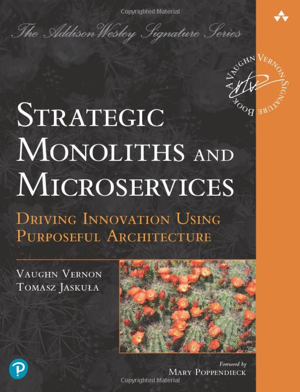
Hey there, just a quick heads up! When you purchase a book through the links I’ve shared in this post, I receive a small commission at no extra cost to you. It’s a great way to support my work while discovering awesome reads. Thanks for your support, and happy reading!
Emergence of Microservices as a Viable Alternative to Monolithic Architectures
As software applications grew in size and complexity, developers faced mounting challenges maintaining and scaling monolithic architectures.

Fueled by a passion for innovation, they sought new approaches, leading to the emergence of microservices.
Emergence of Microservices: A Distributed Alternative
The emergence of microservices as a viable alternative to monolithic architectures can be traced back to the early 2000s, with the publication of the Service-Oriented Architecture (SOA) paradigm in 2004.
This was followed by the emergence of containerization technology, such as Docker, in 2013, which made it easier to deploy and manage distributed systems. Today, microservices have become increasingly popular, with many organizations adopting this architecture for their software applications.
This revolutionary architecture breaks down applications into smaller, independent services, unleashing unparalleled flexibility and scalability.
Distributed Nature
One of the defining features of microservices is their distributed nature. In this approach, the application is broken down into smaller services that can be developed, deployed, and scaled independently of one another.
This allows for greater flexibility and faster development cycles, as changes can be made to individual services without impacting the entire application.
Independent Development
Microservices are also known for their characteristic of independent development. Each service is developed and deployed individually, enabling development teams to focus solely on their specific service without concerns about how it may affect other services.
This level of autonomy allows for faster development cycles and a more streamlined development process.
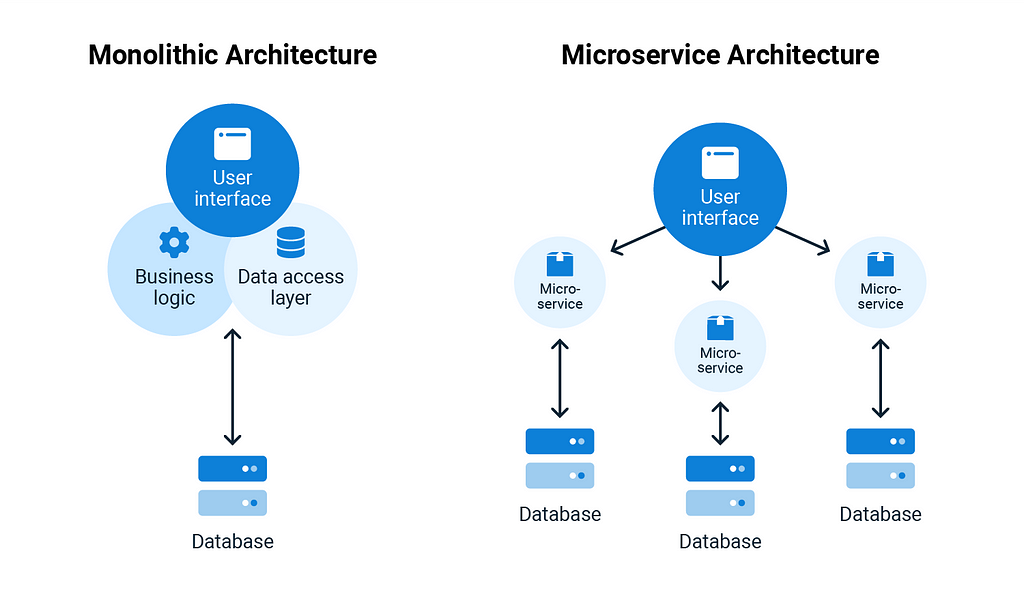
Greater Flexibility and Scalability
Microservices also offer greater flexibility and scalability than monolithic architectures.
Since each service is developed and deployed independently, it is easier to scale individual services based on their specific needs, allowing for more efficient use of resources and faster response times as the application grows.
Challenges of Implementing Microservices
Although microservices come with numerous benefits, implementing them can be challenging. One of the most significant hurdles is the requirement for new infrastructure and tools to handle the distributed nature of the application.
Furthermore, potential changes to development processes, as well as concerns regarding data management and security, must be carefully weighed and addressed.
Microservices have emerged as a viable alternative to monolithic architectures, offering greater flexibility, scalability, and faster development cycles.
While there are challenges associated with implementing microservices, the benefits can outweigh the costs for many organizations.
Benefits of Migrating from Monolithic Architectures to Microservices
As monolithic architectures become more difficult to maintain and scale, many organizations are turning to microservices as an alternative approach to software development.

Increased Agility
One of the primary benefits of microservices is increased agility. Since each service is developed and deployed independently, changes can be made to individual services without impacting the entire application.
This allows organizations to respond quickly to changing user needs and market demands, staying ahead of the competition.
Faster Development Cycles
Microservices also offer the advantage of faster development cycles. Due to the independent development and deployment of each service, development teams can work more efficiently and with shorter feedback loops.
This results in more frequent releases and a faster time-to-market, allowing organizations to respond more quickly to market demands. Additionally, this approach allows for a more efficient use of resources and optimized development processes.

More Efficient Use of Resources
Microservices provide a unique advantage in terms of resource management, as each service can be scaled independently. This means that organizations can allocate resources more efficiently, without the fear of over-provisioning or under-provisioning.
Consequently, this approach leads to better cost management and optimized infrastructure usage, providing a substantial financial benefit for organizations.
Increased Scalability
With microservices, greater scalability is achievable than in monolithic architectures. The ability to scale each service independently means that organizations can add or remove resources as required, without causing any impact on the entire application.
This affords organizations the opportunity to scale their applications promptly in response to user demand, without any concern for bottlenecks or downtime.
In essence, microservices offer unparalleled scalability and can help organizations meet the changing needs of their users in a more efficient and effective manner.
Microservices offer a range of benefits over traditional monolithic architectures, including increased agility, faster development cycles, more efficient use of resources, and greater scalability.
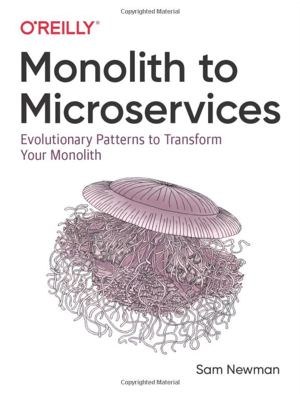
Challenges and Risks of Migrating to Microservices
While the benefits of migrating from monolithic architectures to microservices are significant, there are also challenges and risks involved in the process.

Need for New Infrastructure
One of the primary challenges of migrating to microservices is the need for new infrastructure. Since microservices are distributed, they require new infrastructure to manage communication between services and to ensure that each service is available to users.
This can be a significant investment for organizations, especially those that are already heavily invested in monolithic architectures.
Changes to Development Processes
Migrating to microservices also requires changes to development processes. Development teams must learn new tools and technologies to manage microservices, and they must also change their approach to testing, deployment, and monitoring.
It’s a significant adjustment for development teams, and it may take time to fully integrate these new processes into their workflows.
Potential Issues with Data Management and Security
Another potential risk of migrating to microservices is issues with data management and security. Since microservices are distributed, it can be more challenging to manage data across services, and there is a risk of data becoming siloed or duplicated.
Security risks may be more difficult to manage in a distributed architecture, requiring additional measures to protect data and services from potential threats.
Disruption to Business Operations
Finally, migrating to microservices can be disruptive to business operations. There is a risk of downtime during the transition, and it may take time for users to adapt to the new architecture.
The cost of implementing new infrastructure and processes can be significant, requiring careful planning and budgeting.
Although the advantages of migrating to microservices are substantial, it is crucial to acknowledge the associated challenges and risks. Therefore, organizations must consider these factors before initiating the migration process to ensure a successful transition.
Best Practices for Migrating from Monolithic Architectures to Microservices
As discussed earlier, migrating from monolithic architectures to microservices can be a complex process, and it’s important to take a strategic approach.

In this section, we will explore some best practices for a successful migration.
Phased Approach
One of the key best practices for migrating to microservices is taking a phased approach. This involves breaking the migration into smaller, manageable steps rather than attempting to migrate the entire application at once.
A phased approach allows organizations to identify and address issues early in the process and minimize the risk of downtime or performance issues. It also enables organizations to adjust their strategy as they go, based on feedback and experience gained during each phase.
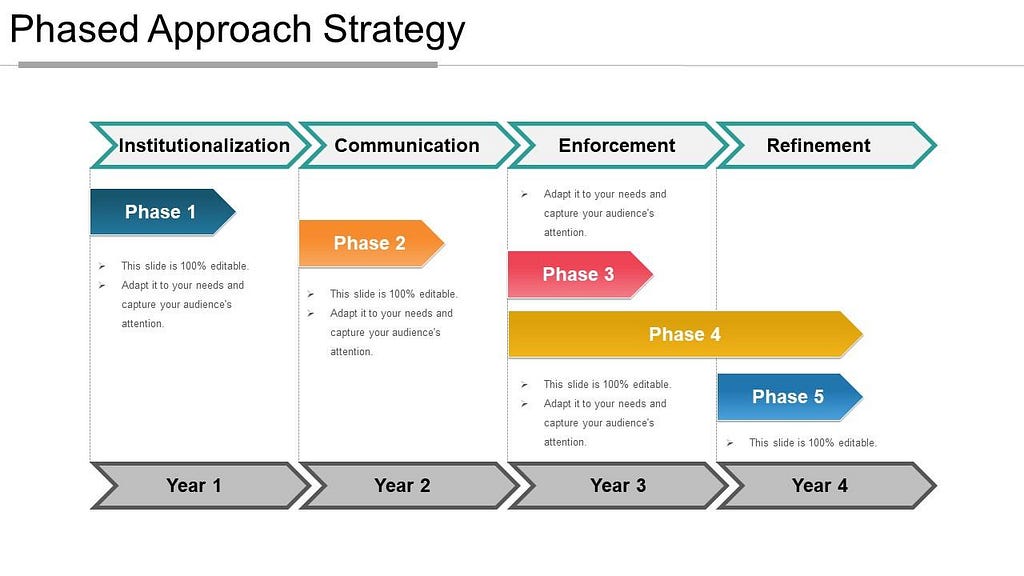
Careful Planning and Testing
Another crucial best practice for migrating to microservices is careful planning and testing. Before embarking on the migration, organizations must thoroughly evaluate their current system and develop a clear roadmap for the migration process.
Testing is also critical to ensuring a successful migration. Organizations must test each service individually as well as the entire system to identify any issues before the migration goes live. This involves developing and executing a comprehensive testing plan that includes load testing, integration testing, and end-to-end testing.
Focus on Collaboration and Communication between Development Teams
Migrating to microservices requires collaboration and communication between development teams. This involves breaking down silos and fostering cross-functional teams that can work together to develop and maintain each service.
Communication is also crucial to ensure that everyone is on the same page and has a clear understanding of the migration plan, goals, and timelines. This includes regular team meetings, progress updates, and feedback sessions to ensure that everyone is aligned and working towards the same objective.
By taking a step-by-step approach, meticulous planning, and thorough testing, in addition to promoting teamwork and communication among development teams, organizations can successfully transition from monolithic architectures to microservices.
As a result, they can achieve greater agility, faster development cycles, and more resource-efficient processes, allowing them to better respond to shifting market conditions and customer demands.
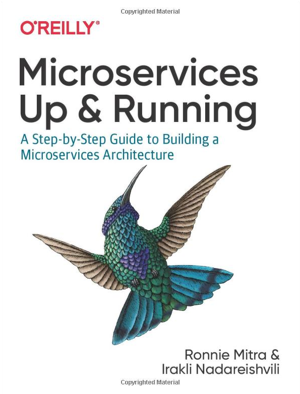
Looking back at the long and winding road to microservices, it’s clear that the journey has been both challenging and rewarding. From the early days of monolithic architectures to the emergence of microservices, software development has come a long way.
As we look to the future, there’s no doubt that there will be more challenges to face and new approaches to adopt. But with each step we take, we can look back on our journey with pride, knowing that we’ve come this far through hard work, determination, and a commitment to innovation.
So let’s keep pushing forward, with passion and excitement for what lies ahead.
Further Reading on Microservices

If you are interested in learning more about microservices and how to implement them effectively, I highly recommend reading these articles on Microservices Orchestration and Choreography approaches.
- Microservices Orchestration Best Practices and Tools
- Microservices Choreography Best Practices and Tools
And, please if you liked this article, don’t forget to follow me for more inspiring content like this! 😎🚀 #Medium #FollowMe
Bibliographic References
- “Strategic Monoliths and Microservices: Driving Innovation Using Purposeful Architecture”, Vaughn Vernon, Tomasz Jaskula, 2021, Addison-Wesley
- “Monolith to Microservices: Evolutionary Patterns to Transform Your Monolith”, Sam Newman, 2019, O’Reilly Media
- “Microservices: Up and Running: A Step-by-Step Guide to Building a Microservices Architecture”, Ronnie Mitra, Irakli Nadareishvili, 2020, O’Reilly Media
The Long and Winding Road to Microservices: The Evolution of Monolithic Architecture was originally published in Level Up Coding on Medium, where people are continuing the conversation by highlighting and responding to this story.
This content originally appeared on Level Up Coding - Medium and was authored by Anto Semeraro
Anto Semeraro | Sciencx (2023-05-07T21:27:10+00:00) The Long and Winding Road to Microservices: The Evolution of Monolithic Architecture. Retrieved from https://www.scien.cx/2023/05/07/the-long-and-winding-road-to-microservices-the-evolution-of-monolithic-architecture/
Please log in to upload a file.
There are no updates yet.
Click the Upload button above to add an update.
